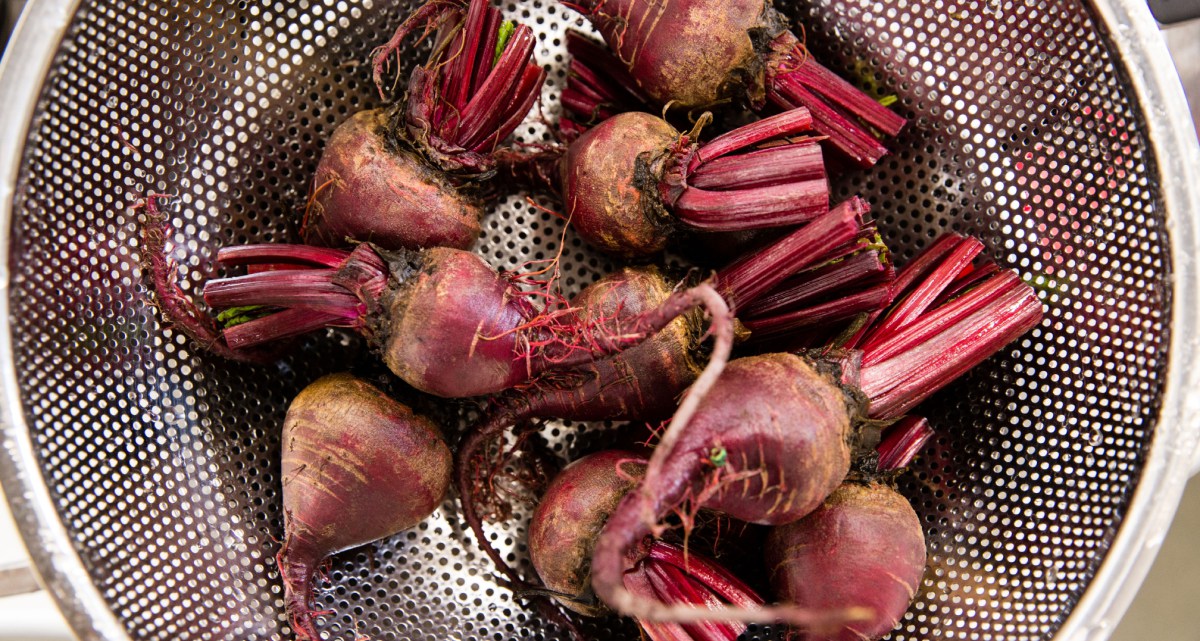Laden with natural reserves of sugar, beets are one of the sweetest vegetables in the world. Their unique pigments dye your skin and your kitchen in an undisguisable punk-rock way. Beets are also one of the most pun-able ingredients I’ve ever worked with, as my colleagues have come to know all too well. They keep telling me to “beet it.”
But beets get a bad rap. For many people, they’re just ominously dark slices from a can that our parents forced us to eat when we were too young to appreciate their unapologetic taste of the earth.
I was never a big beet lover myself, which is one of the main reasons I wanted to revisit the root this month in our second ingredient deep dive (last fall we took a close look at eggplant). After exploring the vast culinary potential of the humble beet, I may be finally coming around.
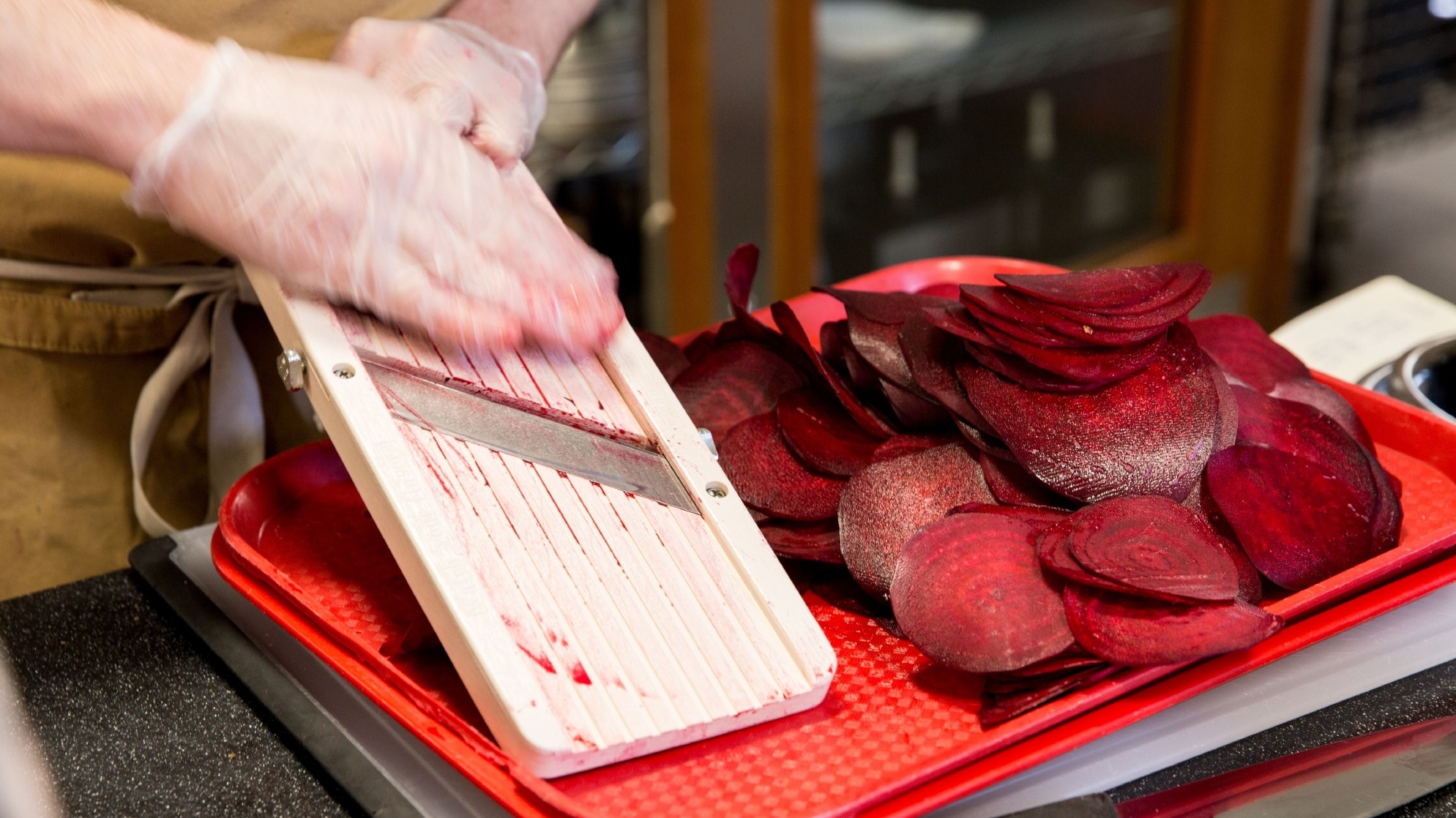
I’m not alone. As chefs and the dining public have embraced sourcing and eating local and seasonal produce, beets are enjoying some well-deserved attention. This attention has led to new and creative culinary treatments for beets (a beet dish from my time cooking at Clio in Boston involved freezing roasted beets with liquid nitrogen in order to smash them into abstract shapes) and an appreciation for traditional preparations as well (check out this perfect whole-beet cookery from chef Christian Puglisi). In developing recipes for this beet deep dive, I wanted to show off the versatility of beets and highlight some techniques that address their more challenging characteristics (sweetness, texture, and long cooking time, I’m looking at you).
You may have noticed that slicing a beet reveals concentric circles that are inside the beet, not unlike tree rings. (This is especially obvious in Chioggia, or candy-stripe, beets.) Those are alternating rings of parenchyma tissue, where the plant stores sugar for energy, and vascular tissue, which transports nutrients throughout the plant. The sugar reserves act as a natural beet antifreeze, lowering the freezing point of water in the plant and thus helping prevent that water from freezing and rupturing cell walls when the temperature drops. Beets’ natural deicing properties are so effective that the Minnesota Department of Transportation uses beet juice to deice roads. Seriously. The beet’s natural sugar has the side effect of making beets very sweet, a trick other vegetables only achieve with significant effort. And that sweetness poses a unique challenge to the beet cook. Should one find ways to balance that sweetness with bitterness and acidity? Or embrace the sweetness and make a dessert? (Yes and yes.) In two of my beet recipes I counteract that intense sweetness with bitterness. I char beets (burning the sugar) for a salad, and pair pickled beet juice with herbal, bitter Campari for a refreshing, jewel-toned granita. But I also celebrate the sweetness by incorporating beet juice into a creamy beet panna cotta with candied black sesame seeds.
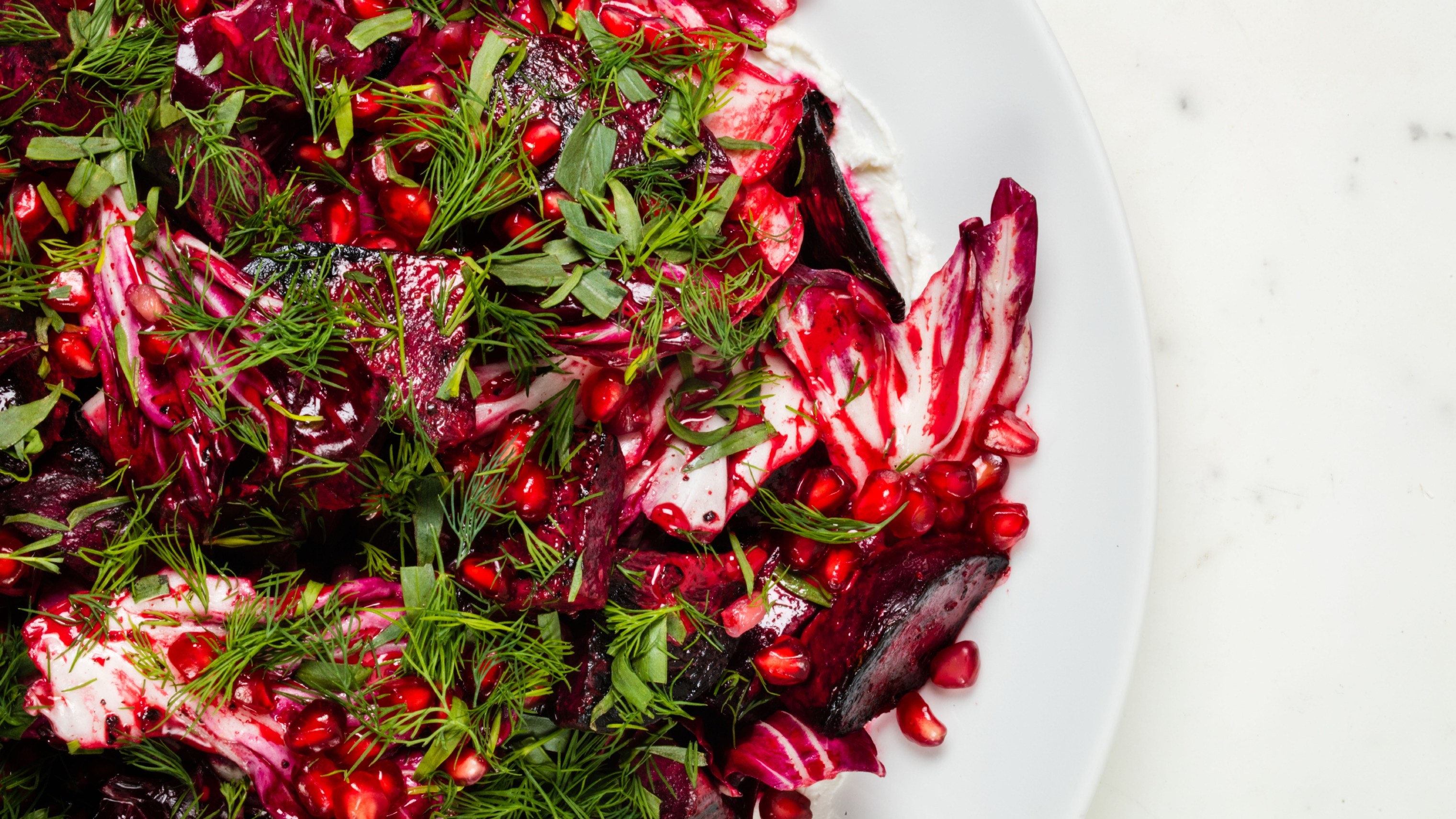
Beets are part of an exclusive club of underground stem vegetables that retain crunchiness even after prolonged cooking (other VIP members include the Chinese water chestnut, lotus root, and bamboo shoots). In his book On Food and Cooking, food science guru Harold McGee explains that beets’ “textural robustness comes from particular phenolic compounds in their cell walls that form bonds with the cell-wall carbohydrates and prevent them from being dissolved away during cooking.” In short, cooking beets can be a time commitment. To get around this problem, I mostly avoided whole-beet cookery (our Charred Beet Salad is the one exception). And for a few recipes I skipped cooking them altogether. The best example of celebrating beets’ “textural robustness” is my crispy, crunchy, lacto-fermented beets, where the natural acidity of lactic acid balances their sweetness.
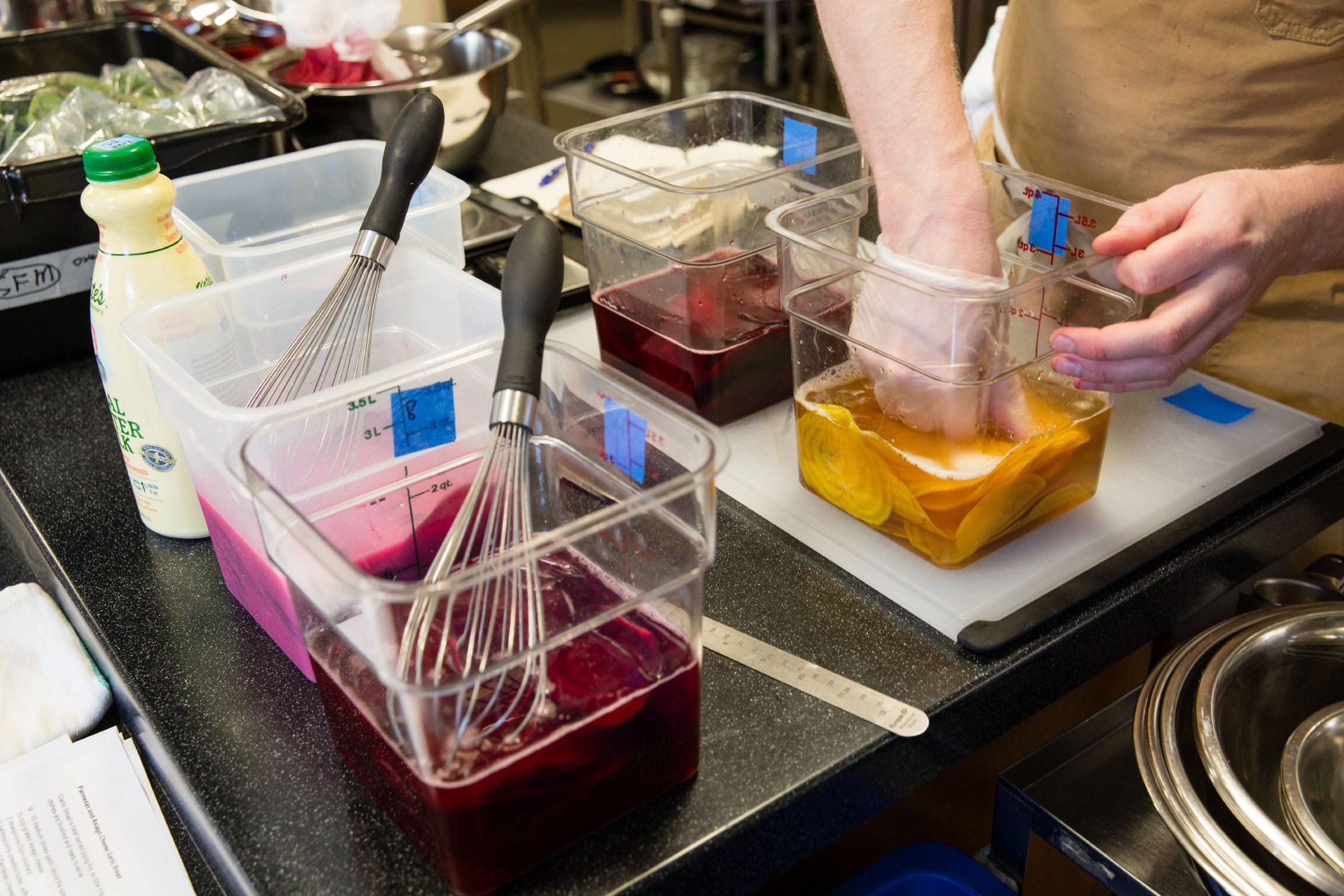
A note on color: During preliminary testing I cooked batches of the three most widely available varieties of beets—red, golden, and Chioggia. The differing appearance of these varieties comes down to their respective types of betalain pigments. Red beets are colored by betacyanins, while golden beets contain betaxanthins. There is even an “albino” variety of white beets that don’t have any betalain pigments. We found minimal difference in flavor and texture when all three types were oven-roasted or cooked sous vide. However, we discovered that golden beets are very vulnerable to discoloration; raw golden beets quickly turned black when sliced or juiced. Also, I’m sorry to report that Chiogga beets lose their striking pinwheel color scheme when cooked, a result of cell walls breaking down and betalain pigment leakage.
We will be rolling out our sweet suite of beet recipes in the coming weeks, so stay tuned, and let us know your deep (dive) thoughts and feelings on beets in the comments section.
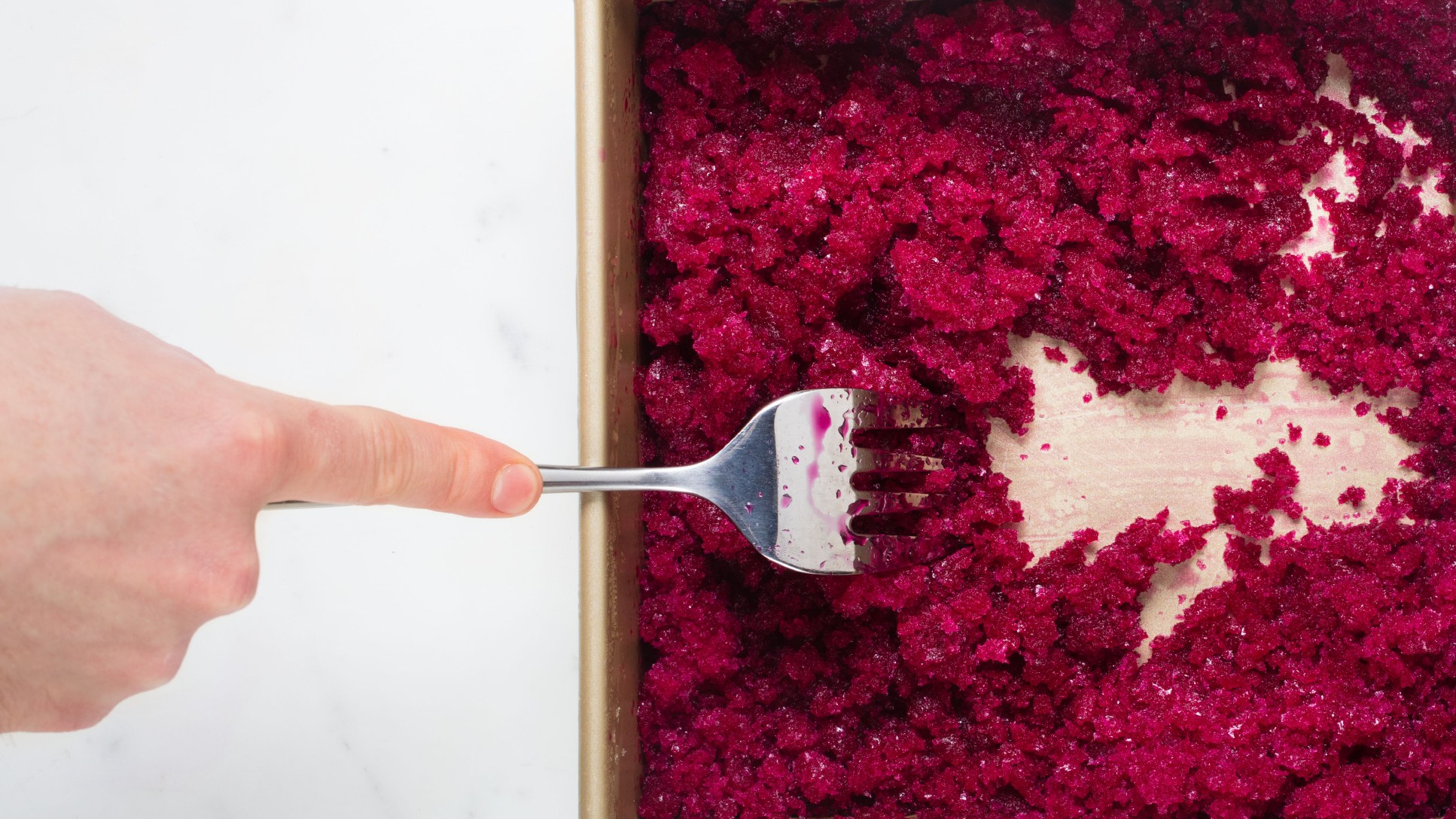
Photography by Steve Klise.
